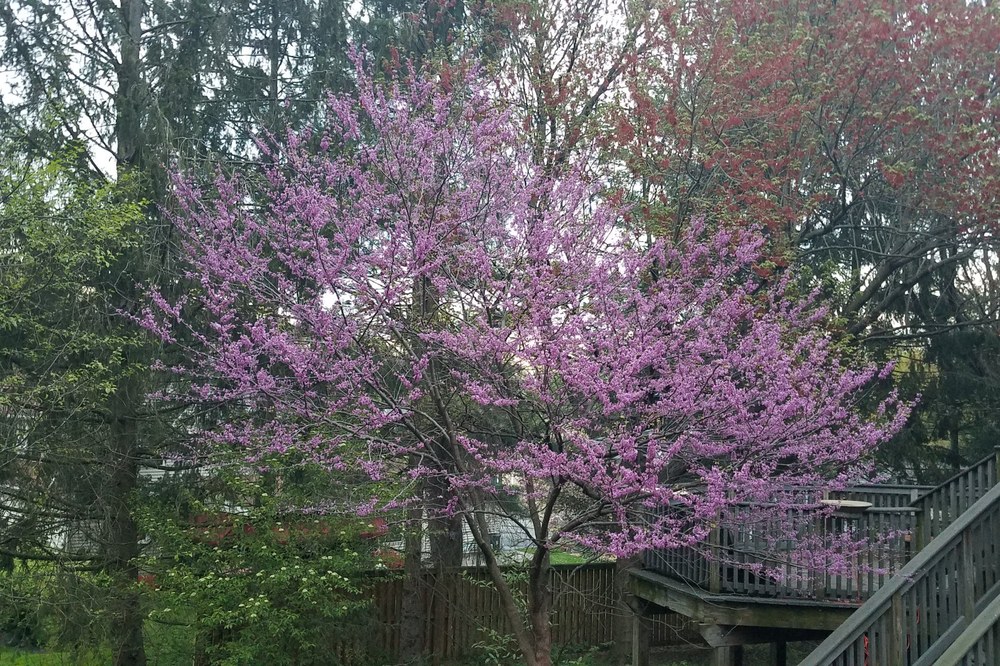Posted: March 31, 2021
Gardening involves things that can be done every year at the same time. Though the annual weather may influence the timing of these tasks, here are the things to do in spring.

April Native Garden Projects - image by Pam Hall
Any unfinished projects from March should be done in April. Sometimes Mother Nature sends us a curve ball such as late snow, heavy rains that prevent us from getting out in the garden because the soil is too wet. Your soil in April should be ready to work.
Tools.
If you have not already done so, be sure your tools are clean and sharp before heading out into the garden.
Divide native perennials.
April is the perfect time to divide robust perennials that are beginning to crowd out surrounding plants. It is an easy way to acquire more plants but helps them to stay vigorous. Please refer to A Guide to Dividing Perennials to learn how, what and when to divide different types of perennials.
Last chance to plant trees and shrubs without risking the chance that they will have to deal with hot weather before established. If you plan to add trees and shrubs before the growing season, now is the time to do it. Consider adding early spring flowering trees or shrubs to benefit early pollinators. Consider a beautiful Eastern redbud (Cercis canadensis) with flowers that provide some of the earliest spring nectar for native bees and honeybees.
Monitor rainfall.
If you do not have a rain gauge, add one to your garden in early April. For optimum growth, most plants require about an inch of rain a week. With a rain gauge you can track rainfall apply additional moisture as needed. This saves money and conserves water. See Measuring Rain at Home.
Add birdhouses.
Set out birdhouses designed for songbirds such as Bluebirds, Wrens, Finches, and Chickadees. Nesting songbirds will devour pesky insects that would otherwise feast on your garden. Select birdhouses designed with the appropriately sized entrance hole for the species you want to attract. Avoid birdhouses with perches; birds do not use them, but predators do. See National Wildlife Best Birdhouses.
Put up hummingbird feeder to help early arrivals:
Hummingbirds feed primarily on nectar from flowering plants and are especially attracted to species with tubular flowers that bloom in shades of red, orange, or purple. Annuals such as petunias or salvia can provide nectar, but many perennials do not bloom until early May. Make your own nectar using one-part white granulated sugar with four parts of water. Slowly heat the solution for one to two minutes, then cool. Store in refrigerator. See Audubon Hummingbird Feeding FAQs.
Spring ephemerals are a sublime gift of nature at the end of a long cold winter. They are usually found in woodlands, but some people have a home garden site suitable for growing them. See Spring Ephemerals for Residential Gardens. An ephemeral plant is one marked by short life cycles. The word ephemeral means transitory or existing only briefly. They emerge early spring and then go dormant storing up energy underground till the next spring. Spring ephemerals provide food a variety of pollinator, primarily native bees and flies that visit these flowers for nectar and pollen. Read about how use ephemerals in residential gardens in Lancaster County visit Shenk's Ferry Preserve now owned by the Conservancy of Lancaster.
By Pamela Hall, Master Gardener, Lancaster County

